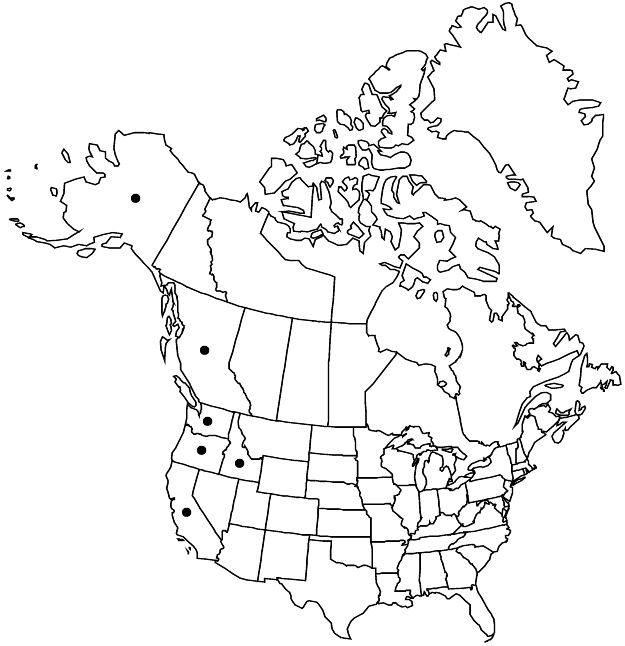Difference between revisions of "Arceuthobium campylopodum subsp. tsugense"
Phytoneuron 2012-51: 10. 2012.
FNA>Volume Importer |
FNA>Volume Importer |
(No difference)
| |
Revision as of 18:17, 24 September 2019
Stems yellow, green, olive green, or purple, 5–7(–13) cm; third internode 4–9.2(–16) × 1–1.5(–2) mm, dominant shoot 1.5–4 mm diam. at base. Staminate flowers 2.8 mm diam.; petals 3 or 4. Fruits 3 × 3 mm.
Phenology: Flowering Jul–Sep(–Oct); fruiting (Aug–)Sep–Nov.
Habitat: Coniferous forests.
Elevation: 0–2500 m.
Distribution

B.C., Alaska, Calif., Idaho, Oreg., Wash.
Discussion
Meiosis occurs in July, with fruits maturing 12 to 13 months after pollination.
Subspecies tsugense has the broadest host range among all subspecies of Arceuthobium campylopodum. F. G. Hawksworth and D. Wiens (1996) considered subsp. tsugense to be a distinct species with two subspecies, subspp. tsugense and mertensianae. Two additional subspecies have been named: subsp. amabilae and subsp. contortae. Although the authors of these subspecies presented evidence of quantitative character variation and differences in phenology and host preferences, all variants are here considered host races of subsp. tsugense (and could be treated taxonomically as forms if so desired). The principal hosts of subsp. tsugense are Abies amabilis, A. lasiocarpa, A. procera, Pinus contorta, Tsuga heterophylla, and T. mertensiana. Secondary to rare hosts include Abies grandis, Picea breweriana, Picea engelmannii, Picea sitchensis, Pinus albicaulis, Pinus monticola, and Pseudotsuga mertensiana.
Selected References
None.